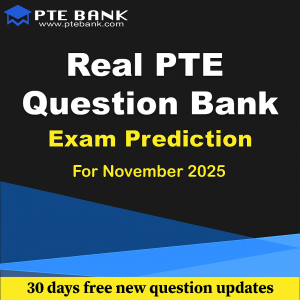Here are Top 3 frequently asked Retell Lecture questions in recent PTE Academic test (October 2020).
1.Curators
I am going to talk today mostly about what I do as a curator here at the National Museum of Australia but I want to draw some generalities from that in terms of a series of curatorial practices, tools, techniques and methods that I think could be of interest to your students and to you in developing extension history courses. I want to talk about what I do as a curator and then from that also talk a bit about the kinds of history that I think museums are particularly good at creating and communicating. Something I would really like to discuss because it is not necessarily very well understood is that I think museums, as Dave insisted by putting up my quote in his slide, create a very particular kind of history. It’s not the kind of history that gets created in books or in films or in compositions, it’s a very particular kind of history that grows out of the fact that museums are centrally interested and defined by their collections. I should that is not an uncontested view of museums but it is certainly my view of museums.
Curators try to understand material culture as evidence of other people’s lives as a means to try to understand other people – what they look like, what they did, how they made a living, what they hoped for in their lives, how they tried to construct their world and why they made particular choices. One way in which curators differ from other historians is therefore in terms of how we interrogate the past, what elements we use to communicate the past. Most academic historians are trained in the discipline of words and they concentrate on words still today, although it is changing a little bit. If you go through university history primarily you are encouraged to draw on things like archival accounts, manuscripts and now oral histories, and most of that work is actually promulgated in the form of books.
There are also other kinds of historians. Obviously film makers and photographers concentrate on creating images of the world and arranging them in meaningful sequences, but curators attend to objects. We look at objects as evidence of the past and try to arrange objects in meaningful ways called exhibitions.
2.Inhabitants in Australia
The first inhabitants in Australia were the ancestors of the present indigenous people. Whether these first migrations involved one or several successive waves and distinct peoples is still subject to academic debate, as is its timing. The minimum widely accepted time frame places presence of humans in Australia at 40,000 to 43,000 years Before Present, while the upper range supported by others is 60,000 to 70,000 years BP.
In any event, this migration was achieved during the closing stages of the Pleistocene epoch, when sea levels were typically much lower than they are today. Repeated episodes of extended glaciation resulted in decreases of sea levels by some 100150 m. The continental coastline therefore extended much further out into the Timor Sea than it does today, and Australia and New Guinea formed a single landmass (known as Sahul), connected by an extensive land bridge across the Arafura Sea, Gulf of Carpentaria and Torres Strait
The ancestral Australian Aboriginal peoples were thus long established and continued to develop, diversify and settle through much of the continent. As the sea levels again rose at the terminus of the most recent glacial period some 10,000 years ago the Australian continent once more became a separated landmass. However, the newly formed 150 km wide Torres Strait with its chain of islands still provided the means for cultural contact and trade between New Guinea and the northern Cape York Peninsula.
During the 1970s and 1980s around 120,000 southern Asian refugees migrated to Australia. During that twenty years, Australia first began to adopt a policy of what Minister of Immigration Al Grassby termed “multiculturalism”. In 2004-05, Australia accepted 123,000 new settlers, a 40% increase over the past 10 years. The largest number of immigrants (40,000 in 200405) moved to Sydney. The majority of immigrants came from Asia, led by China and India.
3.Implicit and Explicit Memories
There are two main categories. Explicit memory is a memory that can be intentionally and consciously recalled. This is your memory of riding a bike and falling over the handlebars, and skinning your knee. The other is implicit memory which is an exponential functional form of memory that cannot be consciously recalled. This is your memory of how to ride a bike or how to balance. These are often not tied to a visual memory, but more like muscle memory. Examples of implicit memory include using language naturally, driving and reading, and answering multiple questions in the test. Let’s look at explicit and implicit memory in a little more detail, and see how age influences these. It is an experimental or functional form of memory. Explicit memory consists of a great deal of highly personal memories related to time, space and people. It is totally different from implicit memory. Now, if we look at the examples of explicit memory, it includes remembering people’s birthdays and answering multiple questions in a test.
More Real PTE Questions for October 2020?
Get start with signing up with PTE BANK!
Step 1: Register an account
Step 2: Choose your perfect PTE Exam Package
Step 3: Go to “My Account”, click on “download” to get PTE preparation materials




